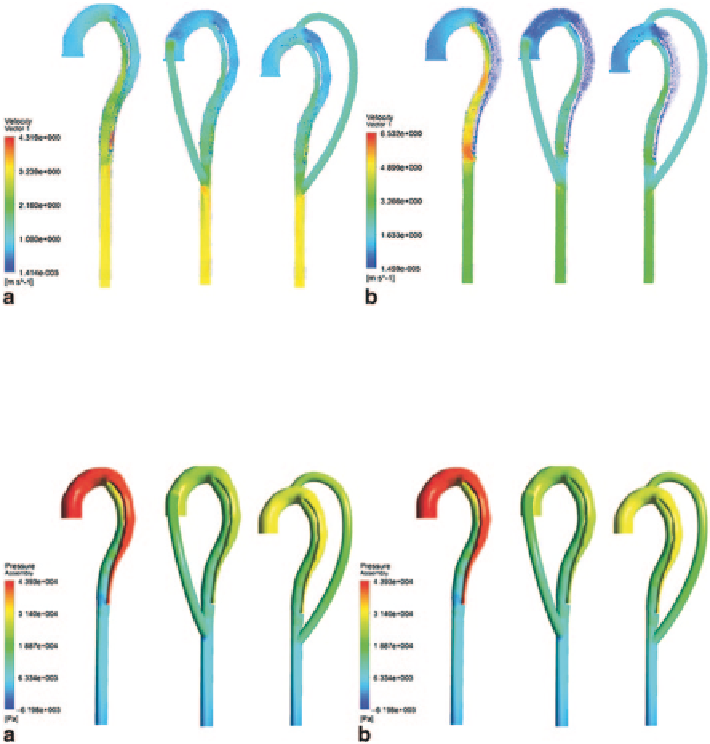Biomedical Engineering Reference
In-Depth Information
Fig. 8.66
Velocity vectors contour of blood flow at a time of 0.04 s. (
a
) Through lumen model; (
b
)
blind lumen model. In each figure,
left
: before bypassing;
middle
: bypassing between ascending
aorta and abdominal aorta;
right
: bypassing between left subclavian artery and abdominal aorta.
(Image from Qiao et. al. 2014)
Fig. 8.67
Distribution of blood pressure at a time of 0.04 s. (
a
) Through lumen; (
b
) blind lumen.
In each figure,
left
: before bypassing;
middle
: bypassing between ascending aorta and abdominal
aorta;
right
: bypassing between left subclavian artery and abdominal aorta. (Image from Qiao et.
al. 2014)
Bypass graft, as an alternative approach in treating aortic dissection, has many
advantages compared with general thoracic aortic replacement, such as smaller
trauma, simpler operation, shorter operation time and less surgical risk. It is also an
alternative treatment for patients unable to withstand major surgery. The simulation
results demonstrated that bypass grafting can effectively divert blood flow from the
aortic dissection. The pressure and velocity in the false lumen, the mass flow rate
in the dissected aorta, and the inlet pressure near the ascending aorta are greatly
reduced after bypass grafting. These changes can reduce the blood pressure of the
upper limbs and reduce the impact and stress of aortic dissection. It is deduced that
bypass grafting is beneficial to reduce and prevent the expansion and rupture of

Search WWH ::

Custom Search